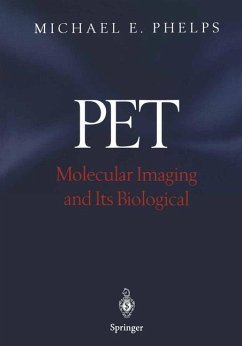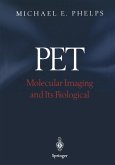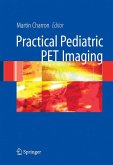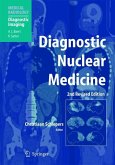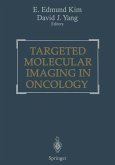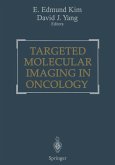This book is written as both a text and a reference book. It contains numerous images from the biological sciences and clinical practice, tables, graphs, and fig ures, as well as exercises that are worked out to aid the reader in understanding principles or solving problems. In some cases, derivations are placed in appen dices so as not to break up the flow of the subject matter in the text. The book is intended for a broad audience interested in molecular imaging with positron emission tomography (PET). It is expected that the readers will range from undergraduate, graduate, and medical students to residents, physi cians, and scientists with backgrounds from various physical, biological, and medical specialty areas. Each chapter presents material in a straightforward man ner that is well illustrated and explained. Because of the diverse audience for the book, certain chapters or sections of chapters will be of more interest than oth ers to certain segments of the readership. Chapter 1 introduces the fundamental physics upon which PET imaging sys tems is based and discusses in detail the technologies and methods used to pro duce PET images. The chapter starts out by reviewing the physics of positron emission and annihilation and explains how positron range and photon non colinearity in coincidence detection place certain limits on spatial resolution.
From the reviews of the first edition: RAD Magazine, June, 2005: This comprehensive reference text is of interest to those who wish a source for understanding the physical principles behind PET scanning and its applications in oncological, cardiac and neurological disease. The text is clear and well illustrated. The physics explanations are well presented and understandable to several levels. This text will be of great value to those departments developing an interest in PET and those staff, radiologists, radiographers and nuclear medicine technicians in training. "This comprehensive reference text is of interest to those who wish a source for understanding the physical principles behind PET scanning and its applications in oncological, cardiac and neurological disease. The text is clear and well illustrated. ... while this is a rapidly moving field, the foundations for further development are well covered. This text will be of great value to those departments developing an interest in PET and those staff, radiologists, radiographers and nuclear medicine technicians in training." (Dr. J G Houston, RAD Magazine, June, 2005) "The writers have produced a successful text that can be highly recommended ... . presents the state of the art in (Pet-based) molecular imaging and the value of such methods ... . It should be of interest not just to specialists in molecular imaging, but also to anyone interested in ... synthesis of imaging, modelling and molecular biology. ... should certainly interest the young radiologists who are starting to develop revolutionary techniques in ... medical imaging." (Andrew Todd-Pokropek, Times Higher Education Supplement, February, 2005) "This book contains more than 600 pages covering the applications and role of PET in molecular imaging. ... The book is well illustrated with good quality diagrams and clinical images in both colour and grey scale. Chapters are well referenced and some include recommendations for further reading. This is an authoritative text that bridges the gap between pure clinical and pure research PET applications in molecular imaging and is likely to have a wide readership." (Gary Cook, European Journal of Nuclear Medicine and Molecular Imaging, Vol. 31 (11), November, 2004)

